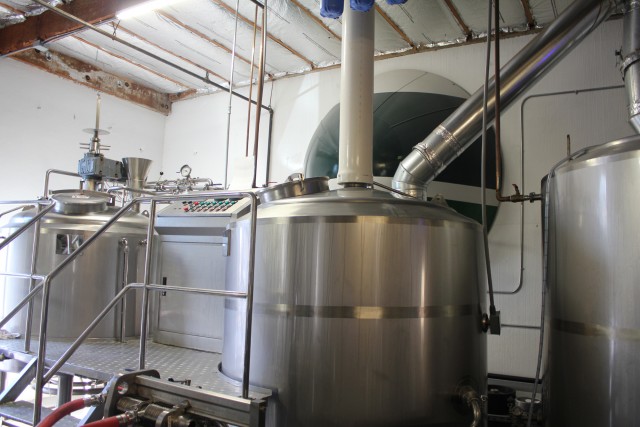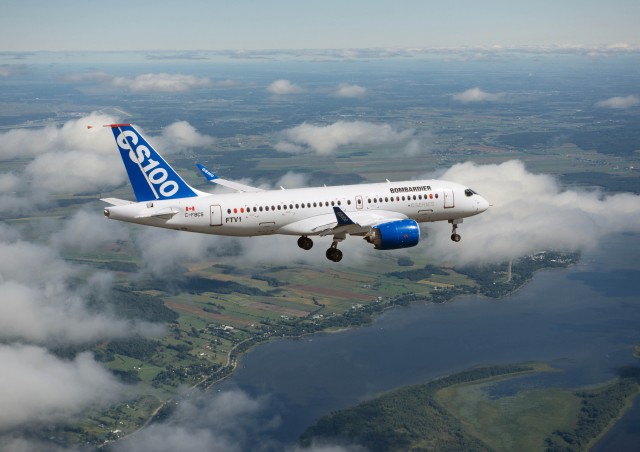
The CS100 during test flights – Photo: Bombardier
Bombardier’s in a bad way lately. Their stock has hit some heavy chop, recently dropping 32% in a three-day period. There’s a margin warning. The company is pricing in a “bankruptcy scenario”. On top of that, the stock fell 11% after they announced the removal of their troubled CEO.
The company is ridiculously leveraged. The cost of a credit default swap on Bombardier has risen 500 basis points. There are even serious questions regarding the company’s liquidity.
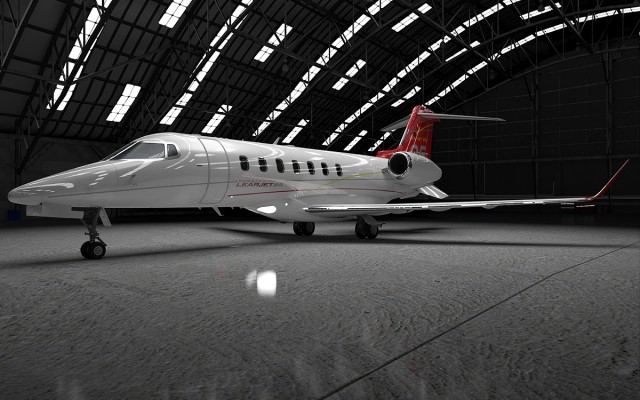
The Learjet 85 – Photo: Bombardier
This whole mess started when the company announced that it was “pausing” its advanced, composite, Learjet 85 for an indefinite period of time due to lack of demand. Now, canceling a business jet should not result in massive investor panic and questions over the viability of a commercial program. The problem is, Bombardier finances a lot of its projects off of the revenue generated by its business jet division and debt. The CRJ and Q400 program, along with trains, are relatively low margin.
There’s a reason investors are starting to, in the words of one firm “[give] up hope.”
Bombardier is suspending its shareholder dividends and working on raising an additional $2.1 billion in capital.
The thing is, in the paraphrased words of Richard Aboulafia at the Teal Group, these moves display a startling amount of intelligence and transparency. The question is, is it too late for Bombardier?
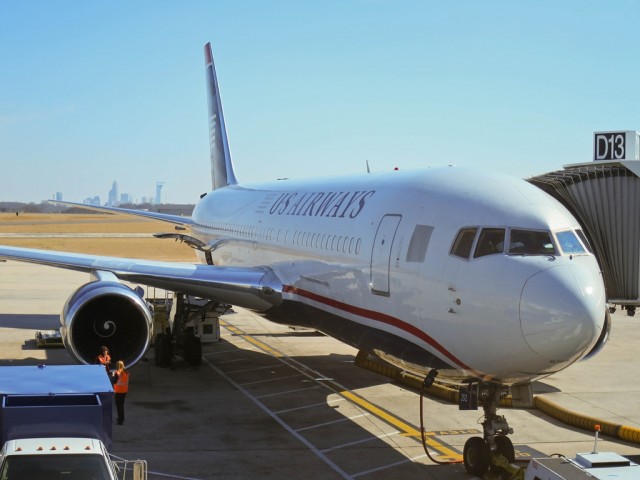
The last US Airways Boeing 767 flight, ready to go – Photo: Justin Cederholm | NYCAviation
This story was written by Justin Cederholm for NYCAviation.com
Another chapter in the long history of US Airways was closed this past Thursday as they operated the final flight of their Boeing 767-200ER. N252AU, which originally joined the USAir fleet in May 1990 as N652US, would be the aircraft to do the honor for today’s final flight. The morning started at Philadelphia’s gate A18 with flowers adorning the gate area and a table full of fresh fruit, drinks, and pastries for guests on this special flight. Flight 767 departed Philadelphia (PHL) bound for Charlotte (CLT) at 9 a.m. with a full load of passengers and a dozen or so aviation enthusiasts looking to be a part of this final flight. The short, uneventful hop down to Charlotte was greeted with a water canon salute from Charlotte’s Aircraft Rescue and Firefighting (ARFF) team.
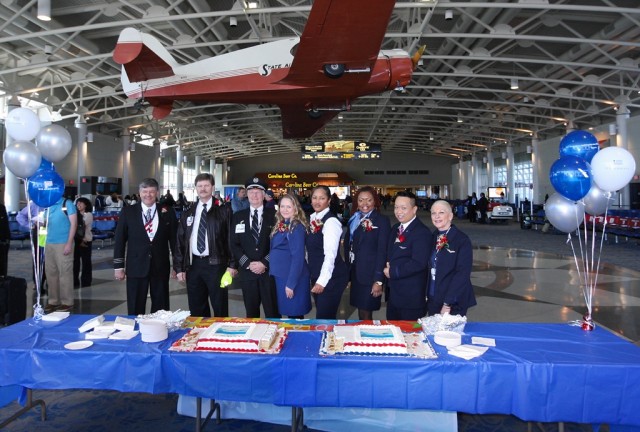
US Airways employees celebrate the final 767 flight – Photo: Justin Cederholm | NYCAvation
Inside Charlotte gate D13 was decorated with balloons, a table draped with a ’˜Happy Retirement’ table cloth and two retirement cakes for the Boeing 767. The final crew posed for photos and cake was distributed. Shortly thereafter boarding began for the final segment of Flight 767 back to PHL. At least two dozen enthusiasts and employees were on board this final fight which had roughly 100 open seats. Flight 767 departed CLT at noon for the final hour-long flight back to its hub. The light load of passengers allowed us to congregate in the aft coach cabin to reminisce on past flights on the 767 and discuss new aircraft joining the fleet of the ’œnew’ American Airlines. Before landing the pilot gave a speech on the history of the 767, its significance in the industry, and its history within the airline.
Continue reading Saying Goodbye to the Last US Airways Boeing 767 on NYCAviation.com

The amazing label for the new #AvGeek beer from Airways Brewery
I like planes. I like craft beer. I like being an #AvGeek. Let’s combine them all!
Airways Brewing Company and AirlineReporter are very excited to announce the new #AvGeek beer! It is a Hoppy Pale Ale and one of the coolest parts? It is using “experimental hop 727.” Who doesn’t love a 727, either being the tri-holed airliner or a hop?
No, this is not a paid advertisement. No, I am not getting any kickbacks here. Yes, I should say that I have been able to enjoy some of this beer. But when something this cool comes along, from a few good people, we surely want to share!
I met the brewery owners, Alex and Dione, a while back — actually at a different brewery. I fell in love with the concept of an airline-themed brewery and we became fast friends. During our discussion, they asked if I liked the idea of an #AvGeek-themed beer. Um, yes please!
They have been working hard to get it ready, and if you are going to Aviation Geek Fest; good news! It’s going to be served at the AvGeek Social on Saturday night (there are still Mini Tickets for sale, where you get to attend the social).
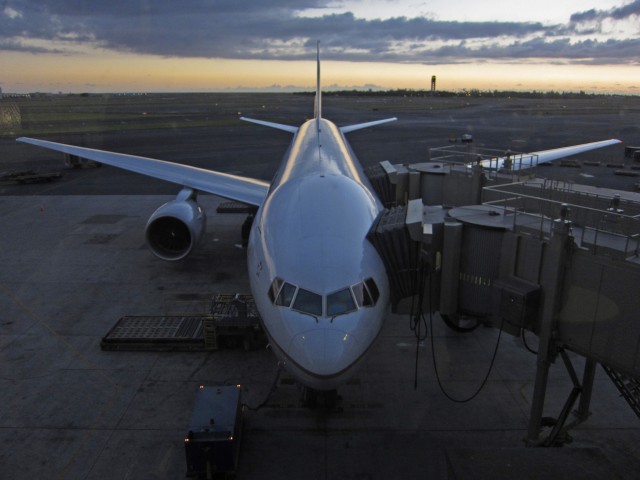
Boarding a 777 flight – Photo: Alan Light | Flickr CC
’œYou’re a travel writer,’ people say to me. ’œBut you’re afraid of flying? How does that work?’
It doesn’t. A terrible experience happened to me, where a flight from Lagos, Nigeria, to Accra, Ghana, kept losing altitude for 30 minutes straight. Storm clouds surrounded us, and I couldn’t see anything. The captain didn’t come on the loudspeaker to say there would be turbulence, or sorry for the inconvenience, or that we were totally safe and not crashing to the ground due to a terrible malfunction. People were screaming the entire time. I was about to vomit when finally I saw a village through the thick, white clouds and realized we were safely landing.
I’ve never been the same since. I’ve gotten better, sure I usually have to fly in order to travel but I’m not totally cured. Not many people are sympathetic to this fear, however, and it sucks. I find these are good ways to upset someone who has a fear of flying.
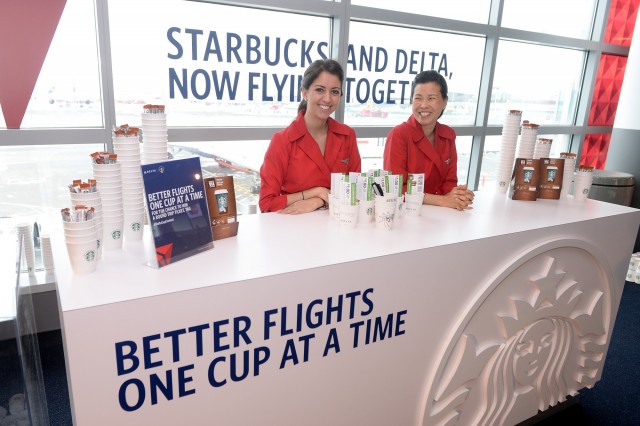
Delta has partnered with Starbucks as their new coffee provider – Photo: Starbucks
I will be the first to admit (and I have) that I am a coffee addict. So to surprise no one, I am talking about something close to my heart, and my stomach. Coffee on-board a flight (or while waiting for one) is a big thing, not only to me, but to so many other travelers.
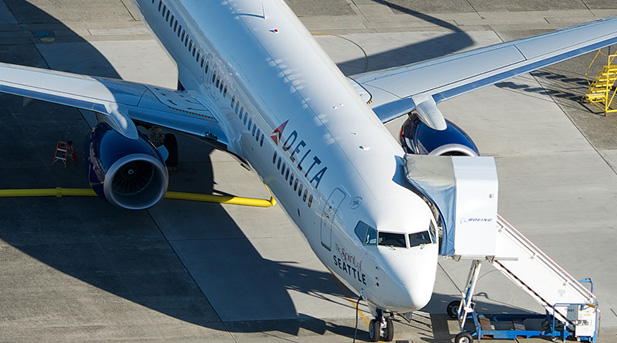
The Delta 737 called “The Spirit of Seattle” seen from the air – Photo: Bernie Leighton | AirlineReporter
Airlines are not known to have the world’s best coffee. Heck, some might even call it plain awful. An airline’s choice of coffee can be an important one, not only to keep the passengers happy but also for their budgets. More and more airlines are taking their choice of coffee quite seriously and I decided to hold the cream and sugar and dive on in.





